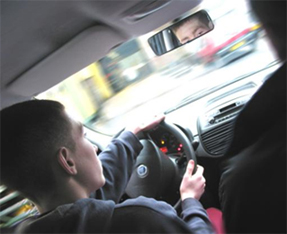Background & Scope
Young drivers are vastly over-represented in road accident fatality and injury statistics. This problem causes great social and economic costs. While the causes of this problem are well known - and are related principally to inappropriate attitudes, inexperience, age and gender - a major challenge remains in identifying and implementing efficient countermeasures. Therefore, on January 1st 2003 the Two-phase education for novice drivers claiming for license class A or class B was implemented in Austria.
This continuum contains on the one hand already implemented models like driving school education, and on the other hand new models, such as feedback driving in traffic (twice), road safety training on track, and further education in the psychological aspects of traffic, carried out as a group discussion. All three modules have to be completed one year after gaining the driving licence for class A and B.
Since the multi-phase training was introduced, a total of around 1.5 million novice drivers have completed their driving license training using this training system.
The Austrian Federal Ministry of Climate Action, Environment, Enegery, Mobility Innovation and Technology decided to let evaluate this measure by the Austrian Road Safety Board in terms of accidents, attitudes and acceptance among young drivers.
The aim of the present study was, on the one hand, to obtain a comprehensive, up-to-date image of the current quality level of the measure, which was realized by means of analyzes of the driver's license register and questionnaire surveys among the target group "novice drivers" with driving license class B. From the results of the work packages, improvement potentials in terms of quality assurance measures for future security were developed and presented.
Method
In order to estimate effects on traffic safety, the evaluation design was based on four levels: statistical data from all novice class B drivers in Austria in order to get an impression of the general acceptance, a process evaluation for participants, a wide scale survey and accident analyses were carried out.
Results
Results indicate a good acceptance of the measure as a whole as novice drivers´ feedback is positive. Results of the process evaluation and the wide scale survey show considerable changes in attitude on the track training day, and a bit more critic assessment regarding safety-relevant statements afterwards. The accident data examined show clearly positive effects, especially in the years directly after the introduction of the measure. However, favorable developments in this regard can no longer be traced back conclusively and unequivocally to the model introduced 20 years ago.
The process and course evaluation as well as experiences from other countries that have comparable training systems now suggest improvements, especially with regard to quality assurance measures.

